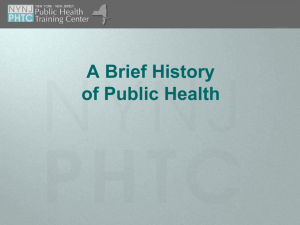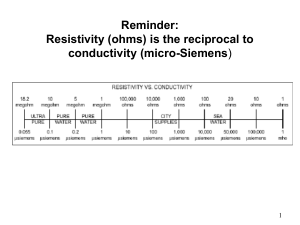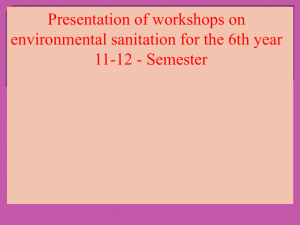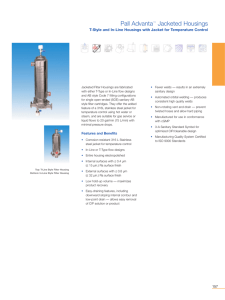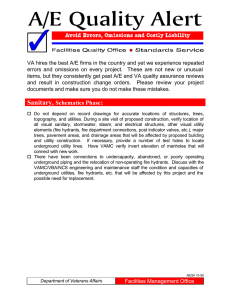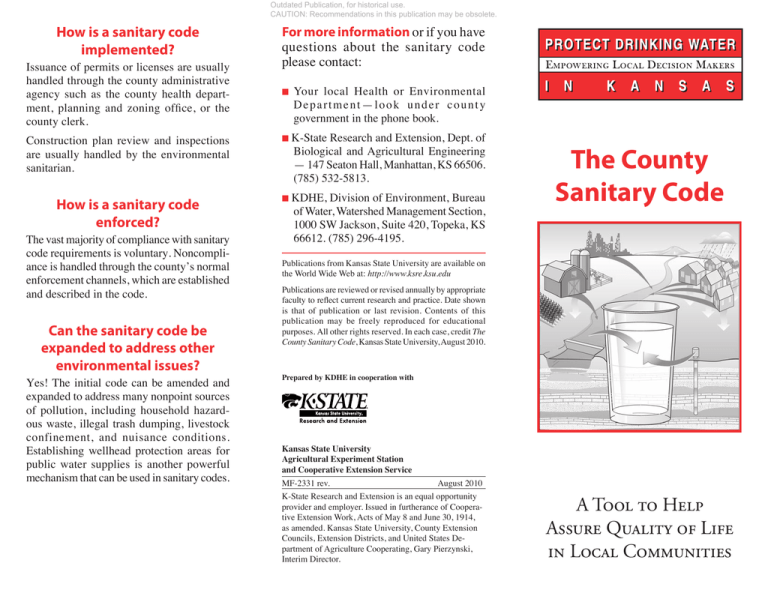
Outdated Publication, for historical use.
CAUTION: Recommendations in this publication may be obsolete.
How is a sanitary code
implemented?
Issuance of permits or licenses are usually
handled through the county administrative
agency such as the county health department, planning and zoning office, or the
county clerk.
Construction plan review and inspections
are usually handled by the environmental
sanitarian.
How is a sanitary code
enforced?
The vast majority of compliance with sanitary
code requirements is voluntary. Noncompliance is handled through the county’s normal
enforcement channels, which are established
and described in the code.
Can the sanitary code be
expanded to address other
environmental issues?
Yes! The initial code can be amended and
expanded to address many nonpoint sources
of pollution, including household hazardous waste, illegal trash dumping, livestock
confinement, and nuisance conditions.
Establishing wellhead protection areas for
public water supplies is another powerful
mechanism that can be used in sanitary codes.
For more information or if you have
questions about the sanitary code
please contact:
■
■
■
Your local Health or Environmental
Department—look under county
government in the phone book.
K-State Research and Extension, Dept. of
Biological and Agricultural Engineering
— 147 Seaton Hall, Manhattan, KS 66506.
(785) 532-5813.
KDHE, Division of Environment, Bureau
of Water, Watershed Management Section,
1000 SW Jackson, Suite 420, Topeka, KS
66612. (785) 296-4195.
The County
Sanitary Code
Publications from Kansas State University are available on
the World Wide Web at: http://www.ksre.ksu.edu
Publications are reviewed or revised annually by appropriate
faculty to reflect current research and practice. Date shown
is that of publication or last revision. Contents of this
publication may be freely reproduced for educational
purposes. All other rights reserved. In each case, credit The
County Sanitary Code, Kansas State University, August 2010.
Prepared by KDHE in cooperation with
Kansas State University
Agricultural Experiment Station
and Cooperative Extension Service
MF-2331 rev.
August 2010
K-State Research and Extension is an equal opportunity
provider and employer. Issued in furtherance of Cooperative Extension Work, Acts of May 8 and June 30, 1914,
as amended. Kansas State University, County Extension
Councils, Extension Districts, and United States Department of Agriculture Cooperating, Gary Pierzynski,
Interim Director.
A Tool to Help
Assure Quality of Life
in Local Communities
Outdated Publication, for historical use.
CAUTION: Recommendations in this publication may be obsolete.
What is a sanitary code?
A sanitary code is a body of rules and regulations formally adopted by resolution by the
county commission. It establishes standards
for location and construction of private water well and wastewater disposal systems,
including proper disposal of septage. When
needed it may address other environmental
issues. The code also establishes a system for
permitting these systems.
Improperly constructed private wells may
allow contaminants free access to drinking water. Poorly designed, constructed, or
maintained onsite wastewater systems may
easily contaminate groundwater or surface
waters. County sanitary code requirements and
minimum standards can significantly reduce
potential health and environmental hazards
resulting from these systems.
Guidelines addressing subdivision water and
wastewater service are always included in the
initial base code.
How is a sanitary code
developed?
A code development committee composed of individuals representing a
broad array of interests is appointed by
the county commission. Contractors,
developers, business owners, real estate
agents, farmers, homeowners, bankers,
health department personnel, other public officials, and any other group that
would be affected by the code should
be asked to serve on this committee.
This committee assesses local environmental conditions and drafts sanitary
code provisions that address specific needs
for that county in consultation with the county
residents and advisors. The hallmark of an
effective sanitary code is that it is tailored
for specific local conditions. It should be as
stringent as needed to produce the desired end
result — protection of human health and the
environment. The sanitary code must comply
with applicable state and federal regulation.
What are the benefits
of a sanitary code?
■ Prevention
of public health risks from
bacteria, viruses, nitrate, and other
impairments.
■ Protection
of both groundwater and
surface water resources.
■ Contractors price and install private water
and wastewater systems more uniformly
and effectively when local code standards
are in place.
■ Helps
promote sound economic development of land and water resources in the
county.
■ Homeowners
are more likely to receive
a properly designed and constructed
system when code construction standards,
permitting, and inspection requirements
are specified.
■ Provides
the basis for effective local
management of many nonpoint sources
of pollution that are not addressed by
state programs.
■ Property
values can be preserved or
enhanced. Property with an adequate
and safe water supply and functional
wastewater treatment system is more
valuable than property that does not have
adequate water and wastewater facilities.
Can a sanitary code
be amended
when needed?
Yes! The sanitary code is dynamic and
subject to modification to meet changing conditions. It should be reviewed
and updated regularly. It is recommended that a code be reviewed every
three or four years to ensure that its
provisions are kept current.


